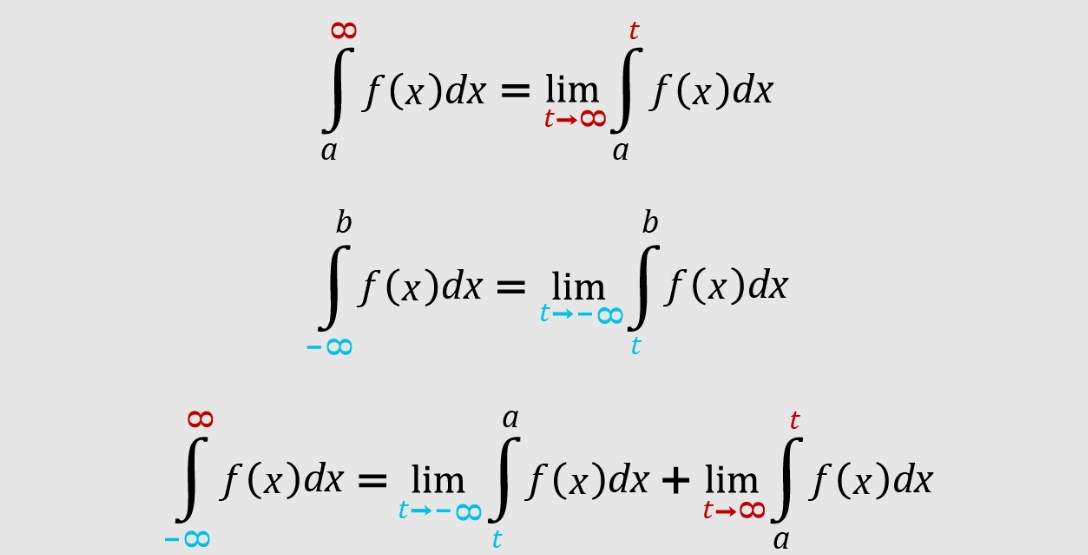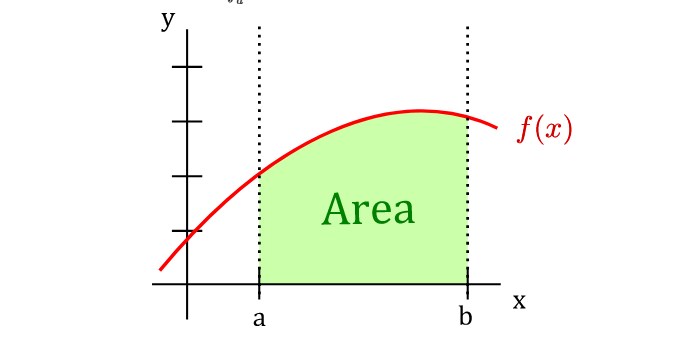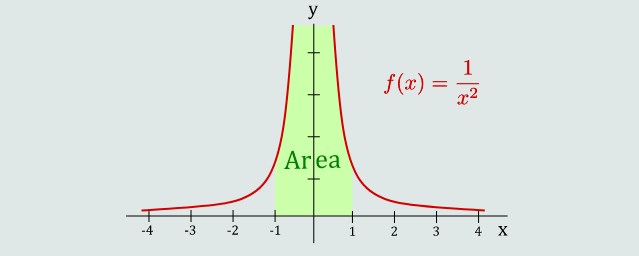Table of Contents
The Improper Integral Calculator displays the integrated value of the improper integral online for free. STUDYQUERIES’s online improper integral calculator tool makes calculation faster, and it displays a value in a fraction of a second.
How to Use the Improper Integral Calculator?
To use the improper integral calculator, follow these steps:
- Step 1: Enter the function and limits in the appropriate input fields
- Step 2: Click “Integrate” to get the results
- Step 3: The integrated value will be displayed in the new window
Improper Integral Calculator
What are improper integrals?
Improper integrals are definite integrals that cover an unbounded area. One type of improper integrals are integrals where at least one of the endpoints is extended to infinity. For example, \(\int_{1}^{\infty}\frac{1}{x^2}dx\) is an improper integral. It can be viewed as the limit \(\lim_{b\to \infty}\int_{1}^{b}\frac{1}{x^2}dx\)

Another type of improper integrals is integrals whose endpoints are finite, but the integrated function is unbounded at one (or two) of the endpoints. For example, \(\int_{0}^{1}\frac{1}{\sqrt{x}}dx\) is an improper integral. It can be viewed as the limit \(\lim_{a\to 0^+}\int_{a}^{1}\frac{1}{\sqrt{x}}dx\)
Is there an unbounded area that isn’t infinite? Is that possible? Of course! Some improper integrals have a finite value, but not all. When the limit exists, we call the integral convergent, and when it doesn’t, we call it divergent.
In other words, we can say that Recall that the Fundamental Theorem of Calculus says that if \(f\) is a continuous function on the closed interval \(\left[a,b \right]\), then
$$\int_{a}^{b}F(x)dx=\left[F(x) \right]_{a}^{b}=F(b)-F(a)$$
where \(F\) is any antiderivative of \(f\). Both the continuity condition and closed interval must hold to use the Fundamental Theorem of Calculus, and in this case,
$$\int_{a}^{b}f(x)dx$$
represents the net area under \(f(x)\) from \(a\) to \(b\).

We begin with an example where blindly applying the Fundamental Theorem of Calculus can give an incorrect result.
Explain why is \(\int_{-1}^{1}\frac{1}{x^2}dx\) not equal to \(-2\).
Here is how one might proceed: $$\int_{-1}^{1}\frac{1}{x^2}dx$$
$$=\int_{-1}^{1}{x^{-2}}dx$$
$$=\left[-{x}^{-1} \right]_{-1}^{1}$$
$$=\left[-\frac{1}{x} \right]_{-1}^{1}$$
$$=\left[-\frac{1}{1} \right]-\left[-\frac{1}{(-1)} \right]$$
$$=-2$$
However, the above answer is WRONG! Since \(f(x)=\frac{1}{x^2}\) is not continuous on \([−1,1]\), we cannot directly apply the Fundamental Theorem of Calculus. Intuitively, we can see why \(−2\) is not the correct answer by looking at the graph of \(f(x)=\frac{1}{x^2}\) on \([−1,1]\).
The shaded area appears to grow without bound as seen in the figure below.

Formalizing this example leads to the concept of an improper integral. There are two ways to extend the Fundamental Theorem of Calculus. One is to use an infinite interval, i.e., \([a,\infty),(−\infty,b]\) or \((−\infty,\infty)\).
The second is to allow the interval \([a,b]\) to contain an infinite discontinuity of \(f(x)\). In either case, the integral is referred to as an improper integral. Probability distributions are one of the most significant applications of this concept, as determining quantities such as the cumulative distribution or expected value typically require integrals on infinite intervals.
Improper Integral: One Infinite Limit of Integration
To compute improper integrals, we use the concept of limits along with the Fundamental Theorem of Calculus.
Definition: One Infinite Limit of Integration. If \(f(x)\) is continuous on \([a,\infty)\), then the improper integral of \(f\) over \([a,\infty)\) is $$\int_{a}^{\infty}f(x)dx=\lim_{R\to \infty}\int_{a}^{R}f(x)dx$$
If f(x) is continuous on(−\infty,b],then the improper integral of f over (−\infty,b] is
$$\int_{-\infty}^{b}f(x)dx=\lim_{R\to -\infty}\int_{R}^{b}f(x)dx$$
Because we are dealing with limits, we are interested in convergence and divergence of the improper integral. When a limit exists and is a finite number, we say the improper integral converges. Alternatively, we say that the improper integral diverges, as captured in the following definition.
Convergence and Divergence
If the limit exists and is a finite number, we say the improper integral converges. If the limit is \(\pm{\infty}\) or does not exist, we say the improper integral diverges.
To get an intuitive (though not completely correct) interpretation of improper integrals, we attempt to analyze \(\int_{a}^{\infty}f(x)dx\) graphically. Here assume f(x) is continuous on \([a,∞)\):

We let \(R\) be a fixed number in \([a,∞)\).Then by taking the limit as \(R\) approaches \(\infty\), we get the improper integral: $$\int_{a}^{\infty}f(x)dx=\lim_{R\to \infty}\int_{a}^{R}f(x)dx$$
We can then apply the Fundamental Theorem of Calculus to the last integral as \(f(x)\) is continuous on the closed interval \([a, R]\). We next define the improper integral for the interval \((−\infty,\infty)\).
Improper Integral: One Infinite Limit of Integration Example
Determine \(\int_{1}^{\infty}\frac{1}{x}dx\) whether is convergent or divergent.
Using the definition for improper integrals we write this as:
$$\int_{1}^{\infty}\frac{1}{x}dx=\lim_{R\to \infty}\int_{1}^{R}\frac{1}{x}dx$$
$$=\lim_{R\to \infty}[\log_e |{x}|]_{1}^{R}$$
$$=\lim_{R\to \infty}[\log_e |{R}|]-[\log_e |{1}|]$$
$$=\lim_{R\to \infty}[\log_e |{R}|]$$
$$=+\infty$$
Therefore, the integral is divergent.
Improper Integrals: Two Infinite Limits of Integration
If both \(\int_{-\infty}^{a}f(x)dx\) and \(\int_{a}^{\infty}f(x)dx\) are convergent, then the improper integral of \(f\) over \((-\infty,\infty)\) is
$$\int_{-\infty}^{\infty}f(x)dx=\int_{-\infty}^{a}f(x)dx+\int_{a}^{\infty}f(x)dx$$
The above definition requires both of the integrals \(\int_{-\infty}^{a}f(x)dx\) and \(\int_{a}^{\infty}f(x)dx\) to be convergent for \(\int_{-\infty}^{\infty}f(x)dx\) to also be convergent. If either of \(\int_{-\infty}^{a}f(x)dx\) or \(\int_{a}^{\infty}f(x)dx\) is divergent, then so is \(\int_{-\infty}^{\infty}f(x)dx\).
Improper Integrals: Two Infinite Limits of Integration Example
Determine \(\int_{-\infty}^{\infty}x\sin(x^2)dx\) whether is convergent or divergent.
We must compute both \(\int_{-\infty}^{0}x\sin(x^2)dx\) and \(\int_{0}^{\infty}x\sin(x^2)dx\).
Note that we don’t have to split the integral up at 0, any finite value \(a\) will work. First, we compute the indefinite integral. Let \(u=x^2\), then \(du=2xdx\) and hence,
$$\int{x\sin(x^2)}dx=\frac{1}{2}\int{x\sin(x^2)}dx=-\frac{1}{2}\cos(x^2)+C$$
Using the definition of improper integral gives
$$\int_{0}^{\infty}x\sin(x^2)dx=\lim_{R\to \infty}\int_{0}^{R}x\sin(x^2)dx$$
$$=\lim_{R\to \infty}[-\frac{1}{2}\cos(x^2)]_{0}^{R}$$
$$=-\frac{1}{2}\lim_{R\to \infty}[\cos(R^2)]+\frac{1}{2}$$
This limit does not exist since \(cos(x)\) oscillates between \(−1\) and \(+1\). In particular, \(cos(x)\) does not approach any particular value as x gets larger and larger. Thus, \(\int_{0}^{\infty}x\sin(x^2)dx\) diverges, and hence, the integral \(\int_{-\infty}^{\infty}x\sin(x^2)dx\) diverges.
Discontinuities
When there is a discontinuity in \([a,b]\) or at an endpoint, then the improper integral is as follows.
If \(f(x)\) is continuous on \((a,b]\), then the improper integral of \(f\) over \((a,b]\) is
$$\int_{a}^{b}f(x)dx=\lim_{R\to a^+}\int_{R}^{b}f(x)dx.$$
If \(f(x)\) is continuous on \([a,b)\), then the improper integral of \(f\) over \([a,b)\) is
$$\int_{a}^{b}f(x)dx=\lim_{R\to b^+}\int_{a}^{R}f(x)dx.$$
Convergence and divergence of an improper integral apply here as well: If the limit above exists and is a finite number, the improper integral converges. If not, we say the improper integral diverges.
When there is a discontinuity in the interior of \([a,b]\), we use the following definition.
Discontinuities Within Integration Interval
If f has a discontinuity at \(x=c\) where \(c\in{[a,b]}\),and bothandare convergent, then \(f\) over \([a,b]\) is \(\int_{a}^{c}f(x)dx\) and \(\int_{c}^{b}f(x)dx\) are convergent, then \(f\) over \([a,b]\) is
$$\int_{a}^{b}f(x)dx=\int_{a}^{c}f(x)dx+\int_{c}^{b}f(x)dx$$
Improper Integral Calculator With Steps:
This topic refers to a calculator that solves improper integrals while providing step-by-step instructions. Explain what improper integrals are and the cases where they arise. Then, introduce the calculator and describe how it simplifies the evaluation process. Provide an example problem and guide users through the steps using the calculator, ensuring to explain each step in detail.
Example: “Improper integrals can be challenging to evaluate, but our Improper Integral Calculator with Steps simplifies the process. Let’s consider the integral ∫(0 to ∞) e^(-x) dx. By inputting the integral into our calculator and following the provided steps, you can easily evaluate the improper integral, allowing you to understand the convergence behavior and obtain the final result.”
Improper Integral Convergence Calculator:
This topic focuses on a calculator that determines the convergence or divergence of improper integrals. Explain the concept of convergence and divergence in improper integrals and the significance of this determination. Introduce the calculator and describe how it determines the convergence behavior. Provide an example problem and guide users through the calculator’s steps to evaluate the convergence of the improper integral.
Example: “Understanding the convergence behavior of improper integrals is crucial in calculus. Our Improper Integral Convergence Calculator helps determine whether an improper integral converges or diverges. For example, let’s consider the integral ∫(1 to ∞) 1/x^2 dx. By inputting the integral into our calculator, you can quickly assess the convergence behavior and determine if the improper integral converges or diverges.”
Evaluate Improper Integral Calculator:
This topic refers to a calculator that evaluates the value of improper integrals. Begin by explaining the concept of improper integrals and why evaluation is necessary. Introduce the calculator and describe how it simplifies the evaluation process. Provide an example problem and guide users through the calculator’s steps to obtain the numerical value of the improper integral.
Example: “Evaluating improper integrals is an important task in calculus. Our Evaluate Improper Integral Calculator streamlines this process. Let’s consider the integral ∫(0 to ∞) x^2 e^(-x) dx. By inputting the integral into our calculator and following the provided steps, you can obtain the numerical value of the improper integral, facilitating your understanding of the problem.”
Improper Integral Calculator Online:
This topic focuses on an online calculator that can handle improper integrals. Explain the convenience of using an online calculator and the benefits it offers in terms of accessibility and availability. Introduce the calculator and highlight its user-friendly interface and accurate calculations. Provide an example problem and guide users through the calculator’s usage to evaluate the improper integral.
Example: “Our Improper Integral Calculator Online provides a convenient and accessible solution for evaluating improper integrals. Whether you’re a student or a professional, you can easily access our calculator on any device. For instance, let’s evaluate the integral ∫(1 to ∞) sin(x)/x dx. By using our online calculator and following the intuitive interface, you can quickly evaluate the improper integral and obtain the result.”
Proper Or Improper Integral Calculator:
This topic refers to a calculator that determines whether an integral is proper or improper. Begin by explaining the difference between proper and improper integrals. Introduce the calculator and describe how it classifies integrals into proper or improper. Provide an example problem and guide users through the calculator’s steps to determine the nature of the integral.
Example: “Distinguishing between proper and improper integrals is essential in calculus. Our Proper or Improper Integral Calculator helps classify integrals. Let’s consider the integral ∫(0 to 1) x^2 dx. By inputting the integral into our calculator, you can quickly determine whether it is a proper integral or an improper integral, helping you understand the nature of the problem.”
FAQs
What is improper integral with example?
An improper integral is one that has either or both infinite limits or an integrand that approaches infinity at one or more points in the range of integration. Riemann integrals cannot be used to compute improper integrals.
What makes an integral improper?
Integration is improper if either the lower limit of integration is infinite, the upper limit of integration is infinite, or both the upper and lower limits of integration are infinite.
What is proper and improper integral?
An integral with neither infinite limit nor integrand that approaches infinity at any point in its range.
What are the two types of improper integrals?
Improper Integrals exist in two types: Type 1 – when the limits of integration are infinite, and Type 2 – when the limits of integration are finite. An improper integral of type 2 occurs when the integrand becomes infinite within the integration interval.
